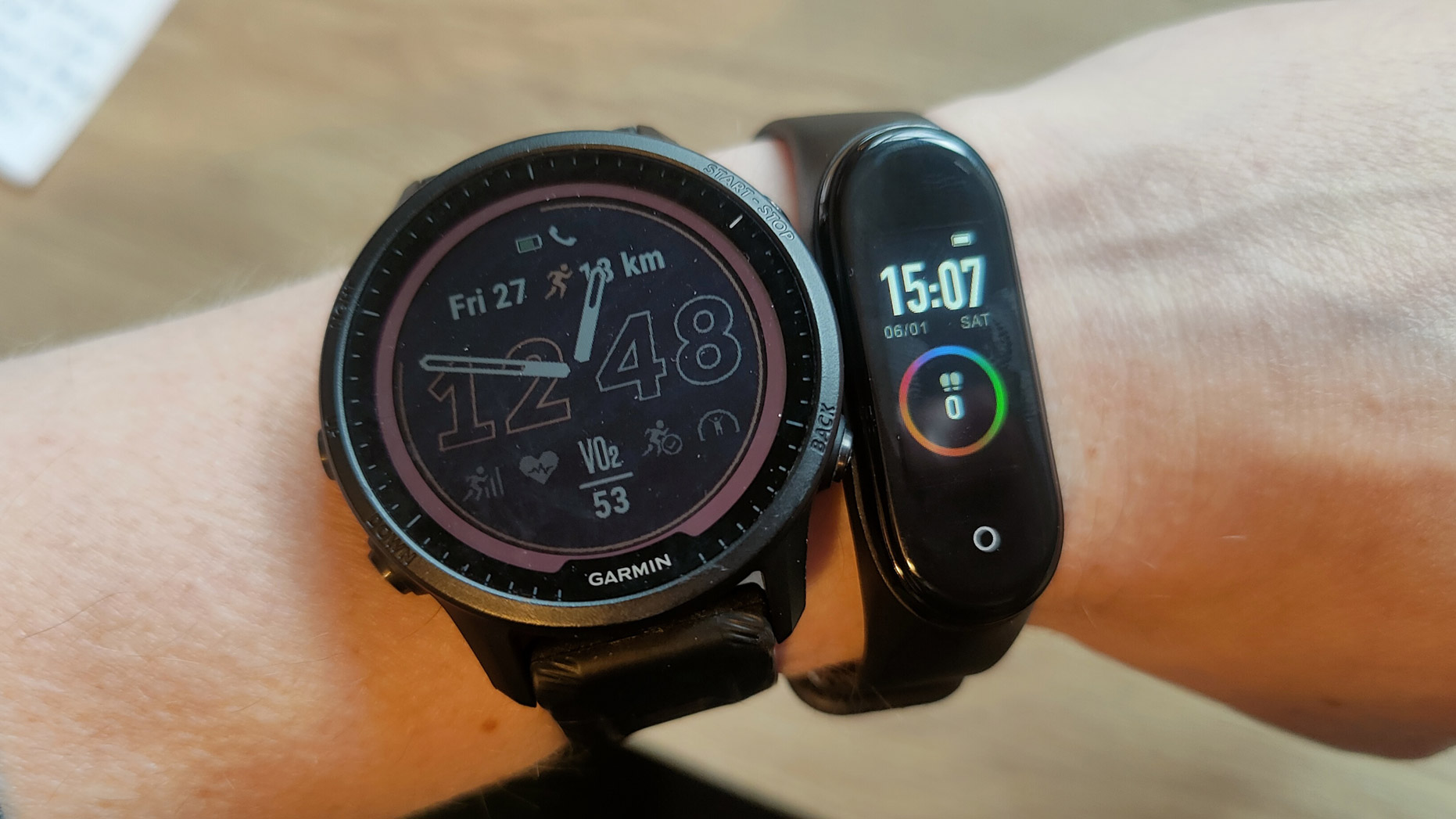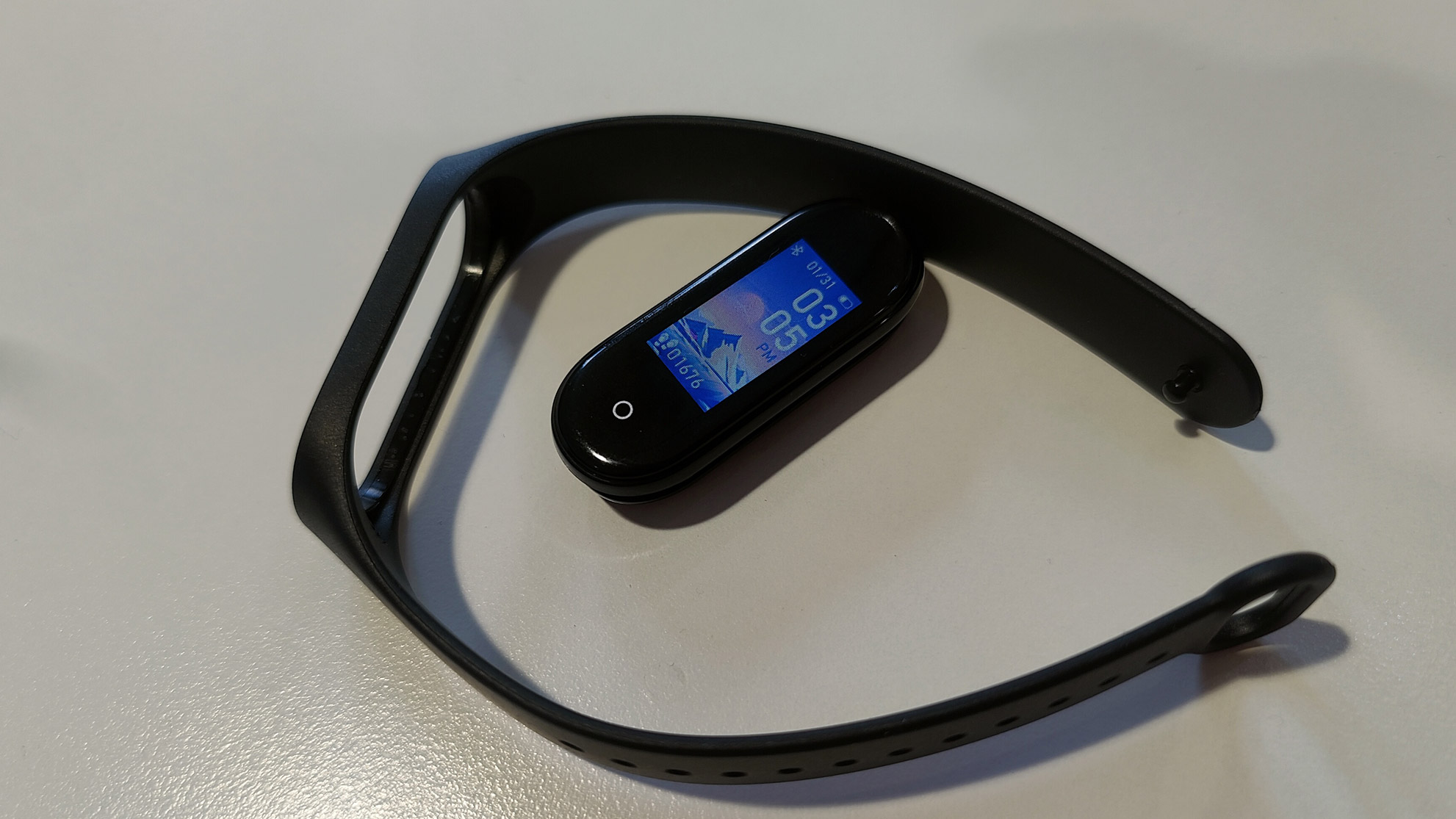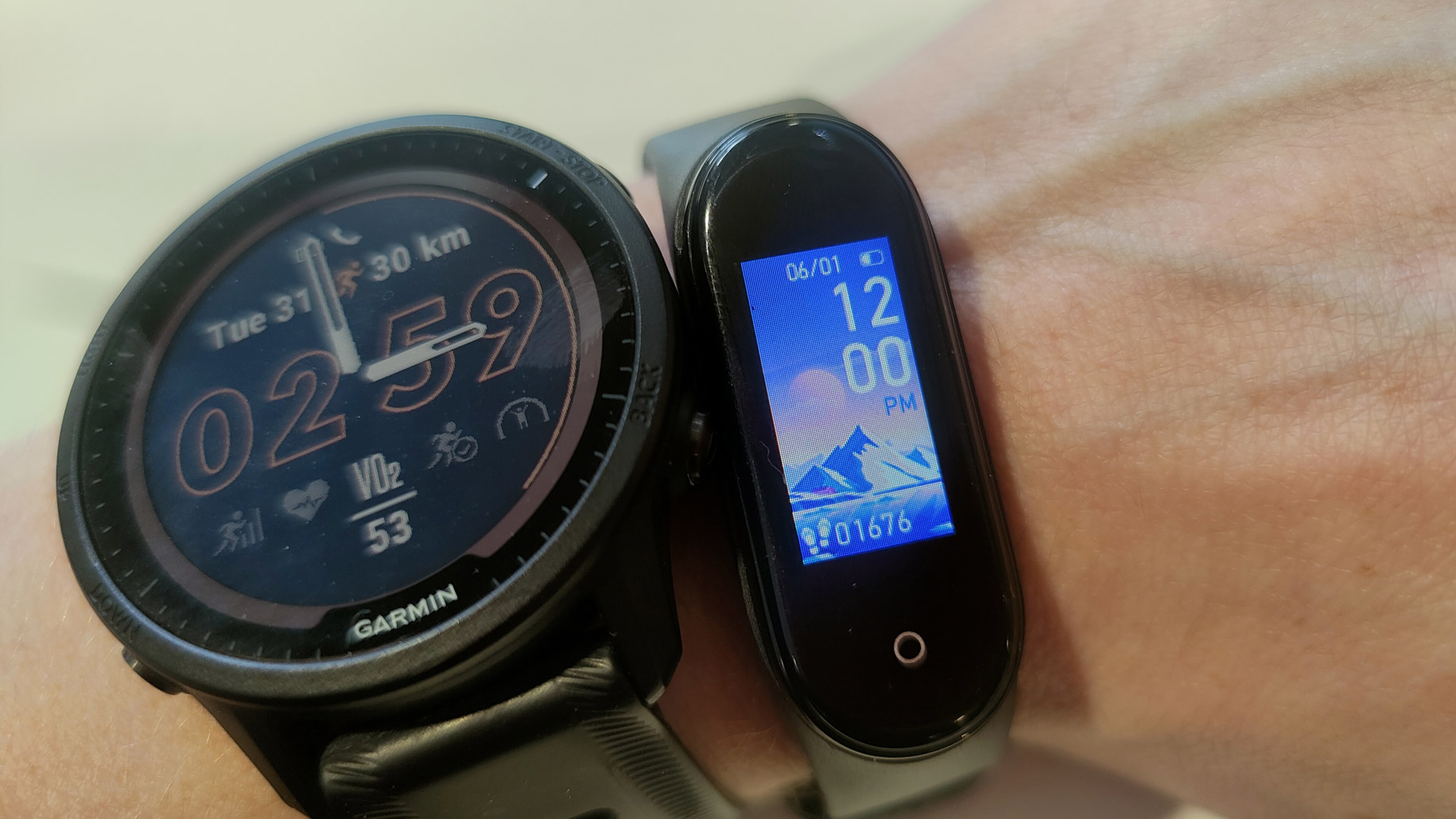I tested the cheapest fitness tracker to see if it could match a top Garmin watch
Is a cheap fitness tracker really all you need?

Good fitness tech shouldn’t be restricted by price. Just like everyone deserves the opportunity to work out, eat healthier and become the best version of themselves, the technology that makes that easier should be available to as many people as possible.
The wearables in our best cheap fitness trackers list are generally very good, able to accurately track the wearer’s heart rate, calories burned, sleep, exercise, and allow the wearer to see text messages and other notifications on their wrist. Most of these trackers start at around $50 / £45 / AU$85, although the best smartwatches from the likes of Garmin and Apple often run very expensive indeed.
This is the first in a regular series of articles in which we test really cheap gadgets to see if they're worth even the small amount of money you'll pay for them. Read them all here.
While browsing our cheap fitness trackers guide, I had a sudden thought: what if I went cheaper? With some fitness trackers sold in local pound shops (the UK’s equivalent of the US dollar stores and other similar discount outlets) for a pittance, I began wondering if they could hold a candle to the entry-level efforts from the Fitbit and Huawei that top our best fitness trackers list.
So, I went ahead and picked one up, analyzing it in the same way I would any other smartwatch – by comparing it to a top performer to test the watch's performance and check the accuracy of its metrics.

Viido fitness tracker: Design and features
The Viido fitness tracker, a Chinese-made product, was bought at Poundland for £13 ($16 in the US, or AU$22.69 in Australia). It’s a simple band tracker with a pebble-style plastic face and a silicone band. When I first ripped the box open, it came with no instructions, and a plug-in charger that looked like it didn’t fit. Looking around online it turns out others who got it did have some basic instructions, and because I’m so used to magnetic chargers it took me a full 10 minutes before I realized you need to pop the plastic pebble out of the silicone case to reveal a charging socket at the bottom of the pebble. Good start.
The watch gives you a purported three days of battery life. The unit is all plastic, with the exception of the watch’s innards, and barely weighs a thing. An LED sensor on the back is designed to monitor your heart rate, calories, and so on, while a touch-sensitive button marked by a small circle decal acts as the watch’s all-purpose action button. You can press it repeatedly to cycle through your options, and hold it for two seconds to select something. It could get very dull if there were any more than a handful of options to cycle through, but the watch, surprisingly, does a good job of keeping things streamlined.
The Viido tracker gives you a home “state” function that reads out the steps you’ve taken and calories burned that day, a heart rate monitor, SPO2 blood oxygen sensor, blood pressure monitor (which I was extremely hesitant about: even the best LED sensors struggle with blood pressure, which gave rise to the Huawei Watch D), sports modes (steps, sit-ups and skipping only, strangely), weather, and basic music controls, which allow you to pause, play, skip or return to the beginning of the track.
Get daily insight, inspiration and deals in your inbox
Sign up for breaking news, reviews, opinion, top tech deals, and more.
In order to get it all to work, you have to download the Yoho Sports app, a threadbare piece of software I was (and still am) slightly worried might clone my phone or nick my bank details. That contains basic settings, including the ability to toggle features such as the internal gyroscope, which allows the watch’s motion sensor to kick the screen into life when you raise your arm, and allows you to swap the watch face to one of twelve or so pre-generated wallpapers. The app also allows you to put in your height, weight, age, and other stats, presumably for more accurate recordings.
All in all, quite a good array of features for $16 / £13 /AU$22.50. But how does it all work in practice? To test it out, I compared its performance with that of my favorite fitness watch from last year: the Garmin Forerunner 955 Solar, which retails around thirty times the price of the Viido. Is the Viido a rip-off? Are its health statistics accurate? And if they are really accurate, why are people paying all this money for premium fitness trackers?

Viido fitness tracker: Performance
First off, the tracker is incredibly stiff to pop in and out of the silicone band. I really thought I was going to break it, or it wasn’t supposed to pop out in this way, before I found the charging port and saw I was doing the right thing. It wasn’t intuitive in the slightest. After I did get it out, the pebble took three hours to charge up for three days’ worth of juice. The Forerunner takes less than one hour and gives you around three weeks, and even a Fitbit Inspire 3 offers seven days of life on a full charge.
Once it was charged up, I popped it on next to my Forerunner and started the heart rate monitor. The Viido doesn’t have an always-on heart rate monitor; you have to activate it manually before it shows a snapshot of heart rate readings. I was sitting still, but my heart rate swung crazily from the 50s to the 120s, while my Forerunner sat resolutely around the 68-72 mark. I sighed: so far, as expected. I swapped the tracker to my other wrist and headed out to grab a coffee.
Once I returned, I had a pleasant surprise: the Viido tracker was accurate to within 150 steps of my Forerunner’s readings. At least this was one metric I could rely on. I tried the blood oxygen sensor, and got 92, while my Forerunner got (to my delight) 93. Accurate blood oxygen reading from a fitness tracker that costs the same as a cinema ticket! Outstanding. The music controls worked fine from my phone too, but that’s where the good stuff ended for me.
I was severely disappointed with the lack of workout options (only three, and no running!), with no way to change them in-app. The custom watch faces you can select through the app did not fill the screen, but showed up as a grainy image-within-an-image, like you might show someone a photo on a flip phone. I couldn’t tell exactly what resolution the screen was on the Viido: the packaging didn’t tell me, nor did Poundland’s website. When the official Viido website was flagged up by my antivirus software, I decided not to pry any further.
Although the watch can purportedly record your sleep and display it in the Yoho app, it did not do so. I wore it for two nights and got no sleep data whatsoever, and there's no toggle switch I could find to give it permission to do so. The tracker would frequently unpair and re-pair (I would get three or four notifications a day saying my fitness tracker was “bound” again) and future walks weren’t anywhere near as accurate on the steps, missing the mark by a few thousand steps at the end of the day.
All in all, even at the price I paid for it, this tracker is a waste of money. At best, you can tell the time, control your music while walking and get notifications on your wrist. At worst, it will provide very wrong health information, feeding you extremely inaccurate heart rate and step count data. The old adage that you get what you pay for isn’t always true in tech, but it certainly is here.
Unfortunately, those hoping to discover a discount hidden gem will be disappointed. You’re better off waiting, saving another $40, and picking up a Huawei Band 7 or another similarly cheap fitness tracker, as long as it's better than this.

Matt is TechRadar's expert on all things fitness, wellness and wearable tech.
A former staffer at Men's Health, he holds a Master's Degree in journalism from Cardiff and has written for brands like Runner's World, Women's Health, Men's Fitness, LiveScience and Fit&Well on everything fitness tech, exercise, nutrition and mental wellbeing.
Matt's a keen runner, ex-kickboxer, not averse to the odd yoga flow, and insists everyone should stretch every morning. When he’s not training or writing about health and fitness, he can be found reading doorstop-thick fantasy books with lots of fictional maps in them.